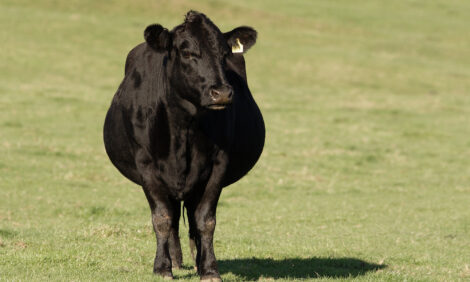



Significance of Shrink
During this time of year cattle are being placed on grass. A better understanding of factors affecting shrink should help buyers and sellers of cattle to arrive at a fair pencil shrink under specific marketing conditions, writes Steve Boyles, Ohio State University Extension.Types of Shrink: There are two types of shrink. One is excretory which is the loss of urine and feces. Excretory shrink is the initial loss of belly fill. Much of this loss is replaced when cattle are again allowed to eat and drink. The second type is loss is tissue loss. It is the loss of fluid from the cells. Tissue loss is more critical.
The proportion of shrink from urine, feces, and other sources varies depending on environmental conditions. When ambient temperatures are low (below freezing, urine and fecal output can comprise 30-35 per cent of shrink. When temperatures are hot, urine and fecal losses account for about 15-20 per cent of shrink. Therefore, actual tissue loss may account for a significant proportion of the total shrink that must be replaced during a subsequent feeding period.
Time and Distance-Rules of Thumb: A very important factor is time in transit. In many cases, three-fourths of the variation is due to time. This explains why truckers should deliver cattle as soon as possible. The following are some estimates.
| Hours in moving truck | % Shrink | Days required to recover payweight |
| 1 | 2 | 0 |
| 2-8 | 4-6 | 4-8 |
| 8-16 | 6-8 | 8-16 |
| 16-24 | 8-10 | 16-24 |
| 24-32 | 10-12 | 24-30 |
Distance is included as a factor because some people think in terms of distance rather than time. One estimate is a three per cent shrink for the first 100 miles.
Cattle Handling, Equipment & Facilities: Anything that reduces stress in the hauling process will reduce shrink. Good loading and holding facilities, easy handling during the loading process and minimizing quick starts and stops in the hauling process can reduce shrinkage. Here are some links to information on hauling, handling and facilities.
It is believed that cattle disposition also may have an impact on shrink. In a study conducted at Kansas State University, two cattle sources were used. Cattle from one source were calm and handled easily, whereas cattle from the other source were easily excitable and difficult to handle. During an 11-day period following an overnight shrink, the excitable cattle recovered less body weight than the calm cattle.
The time of the morning that cattle are removed from pasture before weighing can have an impact on both their body weight and the amount of shrink they incur. Cows grazing were 2.5 per cent heavier in late morning than in early morning. In another grazing study steers that were allowed to graze three hours before gathering were 1.9 per cent heavier than those gathered at daybreak. Rate of cattle shrink throughout the day was also affected by length of morning grazing before removal from pasture.
Steers allowed to graze for three hours before removal from pasture shrank at a rate of 0.86 per cent/h less during the first two to three hours following removal from pasture than those steers removed as grazing began at daybreak. Therefore, allowing cattle to graze for an extended period before shipping not only allows them to gain additional body weight, but also reduces their rate of shrink during the early shrink period.
June 2012


